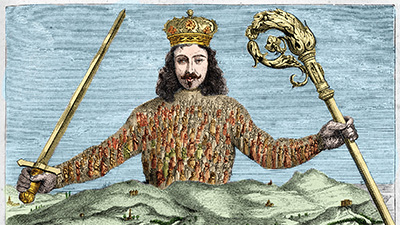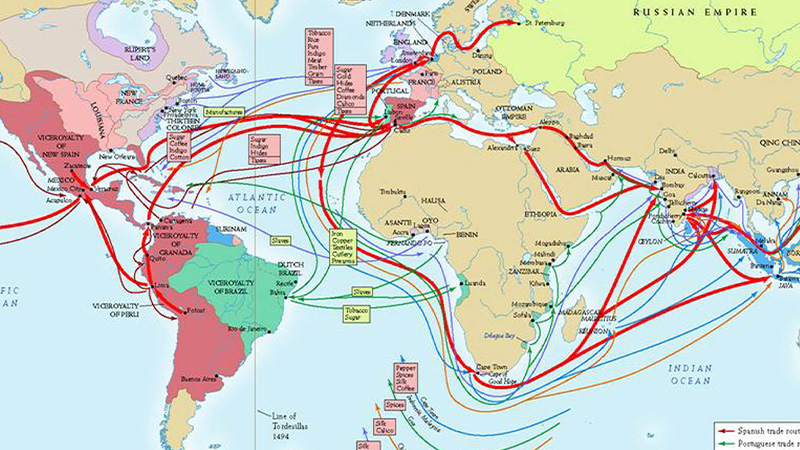Internal and External Challenges to State Power from 1450 to 1750 CE
Teacher Resources
Driving Question: What impacts did organized resistance have on state power c. 1450 to 1750?
As empires expanded throughout the early modern period, evolving states began to centralize their power in order to maintain control over their territories. This centralization often came at the cost of those at the edges of the central state. Across social, political, and economic groups, people within the centralizing empires came together to resist in ways both big and small.
Learning Objectives
- Explain the effects of the development of centralized state power from 1450 to 1750.
- Understand how societies changed politically, economically, and culturally as maritime empires expanded and consolidated their power, and how populations responded to, and even resisted, these changes.
- Analyze primary source documents to assess imperial expansion, competition, and resistance from c. 1450 to 1750 CE.
- Evaluate the changes and continuities to economic and labor systems as new transoceanic empires expanded, and the strategies those maritime empires used to maintain power and influence over their territory.
Opener: Internal and External Challenges to State Power
To teach this lesson step, refer to page 3 of the Lesson 4.6 Teaching Guide.
Prompt parsing is only one step in helping students grow as historical writers. Read "Writing historical essays - not as easy as it sounds!" for more tips.
Have you ever read a prompt and thought, “What in the world is that asking?” We’ve got you covered with the Question Parsing Tool.
State Centralization and Resistance
To teach this lesson step, refer to page 3 of the Lesson 4.6 Teaching Guide.
Growth benefitted expanding empires, but for those in its path, imperial expansion was something that could inspire revolt and resistance.
-
Guiding Questions
-
Before you read
Preview the questions below, and then skim the article. Be sure to look at the section headings and any images.
While you read
Look for answers to these questions:
- What were major trends in the way that states changed in this period?
- What does historian James Scott mean by the term “peasant weapons of the weak”?
- What does the author argue that Tacky’s revolt symbolized? In what ways was it more than just a single revolt?
- What was the goal of Popé’s revolt, and what was the outcome?
- Why did aristocrats revolt in France in the rebellion known as the Fronde?
- What are some ways, besides war, that the Joseon aristocrats resisted the Qing Dynasty?
After you read
Respond to the following questions:
- To what extent does this article explain the effects of the development of state power from 1450 to 1750?
- Two of the revolts described in this article involve resistance by aristocrats, and two involve resistance by conquered or enslaved people. These were two very different groups, but they both resisted the growth of state power. How were the complaints that led to these acts of resistance similar, or different?
Colonization and Resistance: Pueblo Revolt of 1680
To teach this lesson step, refer to page 4 of the Lesson 4.6 Teaching Guide.
The Pueblo Revolt was the first successful revolt against European colonialism in the United States. In this video, you’ll find out what happened and why.
-
Guiding Questions
-
Before you watch
Preview the questions below, and then review the transcript.
While you watch
Look for answers to these questions:
- How does Dr. Swentzell describe the Pueblos of New Mexico before the Spanish arrival?
- Why did the Spanish decide to invade New Mexico and what were some of the immediate consequences of the decision?
- What are some examples that Dr. Swentzell provides about how Pueblo people experienced colonization?
- What are some of the ways that Pueblo people resisted Spanish colonization before 1680?
- The Pueblo Revolt of 1680 was about many different issues, but it was sparked by one big event. What were the main grievances, and what was that big event?
- How did the Pueblos coordinate the revolt? Was it successful?
- The Pueblo Revolt of 1680 is sometimes called the first and most successful revolt against European colonialism. Does Dr. Swentzell agree? What evidence does he mention to support or challenge this idea?
After you watch
Respond to the following question:
- This video makes the argument that the Pueblo Revolt of 1680 should be included in the stories about the Age of Revolutions—including the American, French, Latin American, and Haitian Revolutions. Can you think of any evidence you’ve learned in this course that could challenges this claim?
Key Ideas
Forms of Resistance
Collaborate, adapt, or resist? Indigenous peoples used a variety of tactics, but you’ll decide how to categorize these strategies.
Source Collection: Imperial Expansion, Competition, and Resistance
To teach this lesson step, refer to page 6 of the Lesson 4.6 Teaching Guide.
Looking to add more depth to imperial expansion? There are great ideas in the Community Forum thread What are your favorite resources to provide multiple perspectives on Imperialism?
You have learned a lot about imperial expansion form 1400-1750. Now it’s time to use primary source documents to explain the causes and effects of this expansion! As always, use the Quick-Sourcing Tool to help you.
Closer: Internal and External Challenges to State Power
To teach this lesson step, refer to page 6 of the Lesson 4.6 Teaching Guide.
Keep claim testers top of mind and post these Claim Testing Posters around your classroom.
It’s time to test claims about transoceanic empires! Let’s see what you’ve learned—or haven’t!





